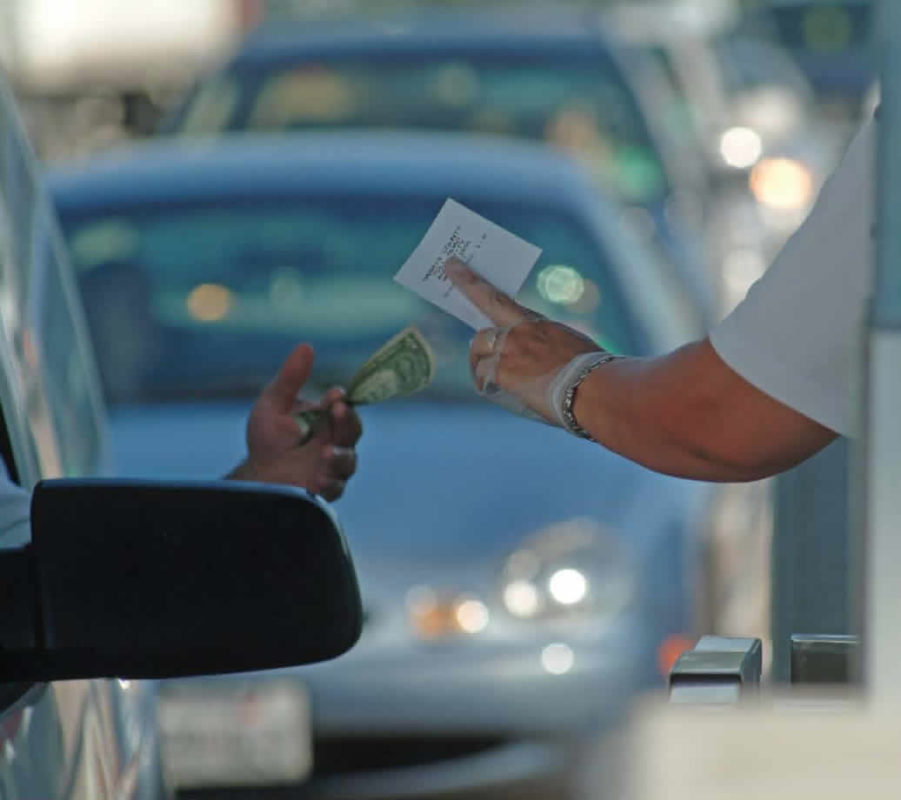How Texans cover the projected $170 billion gap in funding needed to maintain the state's transportation infrastructure through 2030 is a fundamental question that must be addressed.
What’s the Problem?
Lawmakers in the early twentieth century drafted our transportation system’s core funding philosophy around the gas tax, a fee paid on every gallon of gasoline. But dependency on the automobile as a proxy funding mechanism for maintaining our transportation infrastructure created its own problems: urban sprawl, smoggy cities, and a constant need for expanding roadway capacity. At the same time, innovations in technology — like electric, hydrogen-fueled and hybrid cars — and improved gas mileage have resulted in flat gas-tax revenues. The needs of the transportation system have outgrown our capacity to fund them under the old gas-tax model. In fact, according to the Texas 2030 Committee, over the next 25 years the Lone Star State faces a $170 billion gap between projected public revenues and infrastructure improvement needs.
What's the Solution?
Like various agencies at the local, state, and national levels, the Texas Department of Transportation (TxDOT) has investigated supplemental and replacement finance strategies for the gas tax: mileage-based user fees, toll roads, public-private partnerships, transportation reinvestment zones, etc. The state has applied different financing approaches in various situations to date but has lacked a context for evaluating how it should fund transportation in the future. TTI conducted Project 6-0700: Innovative Finance for TxDOT to document Texas’ historical approach, or “funding philosophies” for transportation as a context for better understanding how best to meet the 2030 Committee’s documented need.
The needs of the transportation system have outgrown our capacity to fund them under the old gas-tax model. In fact, according to the Texas 2030 Committee, over the next 25 years the Lone Star State faces a $170 billion gap between projected public revenues and infrastructure improvement needs.
How Was the Study Done?
TTI researchers looked at the historical nature of transportation funding in Texas, where revenue dollars go, and how they’re administered. They then developed a matrix of finance principles and strategies that captures approaches and philosophies along a continuum. Within those categories, specific funding approaches — toll road-user fees versus vehicle registration fees, for example — are mapped and classified. “Historically, the approach has been ‘public funding for the public good,’” explains Dave Ellis, manager of TTI’s Infrastructure Investment Analysis Program and principal investigator on the project. “Recently, we’ve seen more public-private sector partnerships in applications like toll roads.”
Research Benefits
Given the limited (and decreasing) funding available from the public sector these days, finding alternative finance strategies is essential to funding the necessary maintenance and expansion of our transportation system. Using TTI’s input philosophies matrix, Texas lawmakers and other decision makers charged with efficiently and effectively managing the state’s transportation system can better understand the historical evolution of transportation finance and more efficiently and cohesively pursue whatever philosophical approach they choose.
Project Title
Innovative Finance for TxDOTProject Sponsor(s)
Texas Department of Transportation
Project Category
Economics & Policy
Project Termination Date
08/31/2013
Project Publications
For More Information
David Rennie Ellis, Ph.D.
Research ScientistInfrastructure Investment Analysis – TTI Headquarters and Research Building, Room 323
Texas A&M Transportation Institute
The Texas A&M University System
3135 TAMU
College Station, TX 77843-3135
Ph. (979) 845-6165
[email protected]
